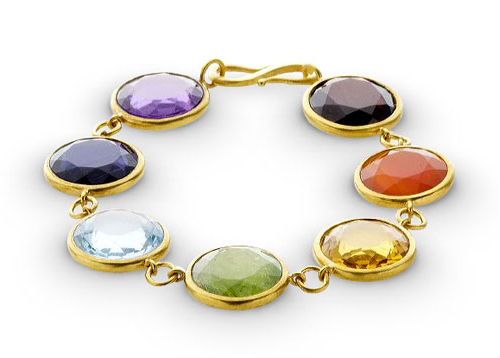
Diamond Color Chart Will Reveal Gemstone Value
By: Kelly York
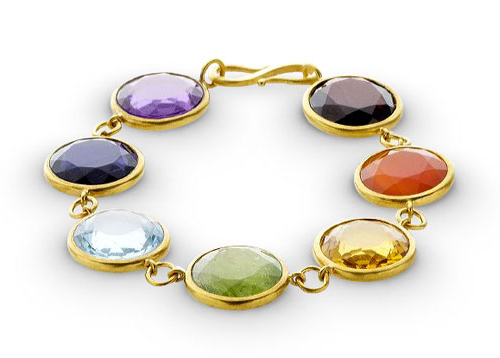 Diamonds Come in a Great Many Colors
Gemological Institute of America (GIA) offers a diamond color chart that will help you understand the value of your diamonds. Of course there are a lot of features that will affect the value of the diamond, it isn’t just color. The video below will explain the many things that go into placing a value on a diamond and let you get an idea of what your diamond is worth.
Diamonds Come in a Great Many Colors
Gemological Institute of America (GIA) offers a diamond color chart that will help you understand the value of your diamonds. Of course there are a lot of features that will affect the value of the diamond, it isn’t just color. The video below will explain the many things that go into placing a value on a diamond and let you get an idea of what your diamond is worth.
Diamond Color Chart
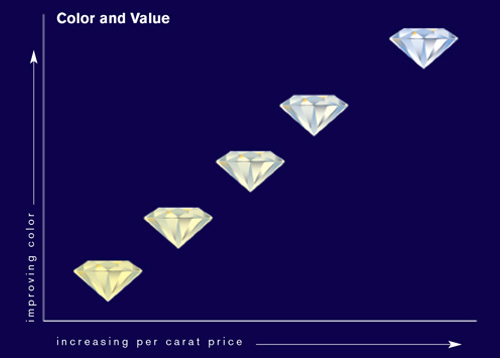 Diamond Color Chart
The diamond color chart helps to figure out the grade of a diamond. The less color the diamond has, the higher the value. Most diamonds do have at least a tiny bit of color, and some have a very strong red, blue, brown or green color. It is the crystal clear diamond, the one with no color at all, no flaws at all, that are the most beautiful. And the more beautiful, the higher dollar value.
The colored diamonds have such deep colors that many people don’t realize they are diamonds. The reds go from a deep, blood red into purples. The blues can be a powder blue to a deep midnight blue. Yellow ranges from a yellowish tinge all the way to a deep brown. And of course, there are many colors in between to make a variety of violets, greens and pinks.
Diamond Color Chart
The diamond color chart helps to figure out the grade of a diamond. The less color the diamond has, the higher the value. Most diamonds do have at least a tiny bit of color, and some have a very strong red, blue, brown or green color. It is the crystal clear diamond, the one with no color at all, no flaws at all, that are the most beautiful. And the more beautiful, the higher dollar value.
The colored diamonds have such deep colors that many people don’t realize they are diamonds. The reds go from a deep, blood red into purples. The blues can be a powder blue to a deep midnight blue. Yellow ranges from a yellowish tinge all the way to a deep brown. And of course, there are many colors in between to make a variety of violets, greens and pinks.
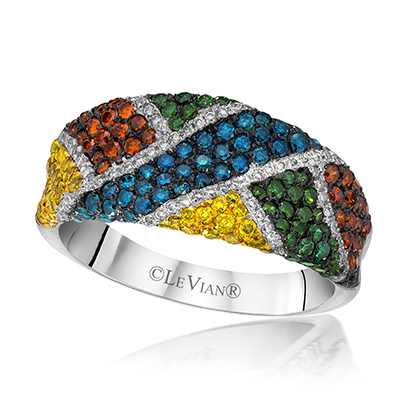 Gold Diamond Ring Featuring Colored Diamonds Designed by LeVian
Not many jewelers enjoy marketing colored diamonds, but the LeVian company has. They base most of their designs on using one or more colored diamonds. In browsing their collections you’ll see a rainbow of beautiful rings, earrings and necklaces using the colorful diamonds.
Gold Diamond Ring Featuring Colored Diamonds Designed by LeVian
Not many jewelers enjoy marketing colored diamonds, but the LeVian company has. They base most of their designs on using one or more colored diamonds. In browsing their collections you’ll see a rainbow of beautiful rings, earrings and necklaces using the colorful diamonds.
The Diamond 4Cs
Watch the video below that was created by GIA to educate consumers on diamonds. It will help you to understand what a jeweler does with the diamond you own to determine if it is a valuable one. It briefly covers the 4Cs of diamond value: Cut, Color, Clarity and Carat.Ensuring Diamond Identity
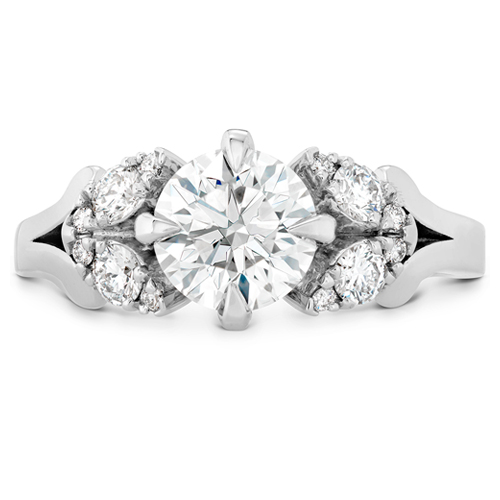 Aerial Petal Diamond Engagement Ring by Hearts on Fire
Once you have purchased a very valuable diamond for your ring, necklace or other jewelry, it is important to have it evaluated by GIA. They can mark your diamond, so that if it is ever stolen then its identity and owner can be easily proven. A jeweler, or even a pawn broker, will automatically check the stone in the ring to look for an identifying mark when someone comes in to sell a stolen ring. When they look up the GIA report code, they will see the diamond is currently stolen and they will call the police. You will receive your ring back. So, technology has gone well beyond just checking the diamond color chart these days. If you’d like to learn more about diamonds, stop by Ben David Jewelers and speak with the Master Jeweler, or browse the educational section of the GIA diamond website.
Aerial Petal Diamond Engagement Ring by Hearts on Fire
Once you have purchased a very valuable diamond for your ring, necklace or other jewelry, it is important to have it evaluated by GIA. They can mark your diamond, so that if it is ever stolen then its identity and owner can be easily proven. A jeweler, or even a pawn broker, will automatically check the stone in the ring to look for an identifying mark when someone comes in to sell a stolen ring. When they look up the GIA report code, they will see the diamond is currently stolen and they will call the police. You will receive your ring back. So, technology has gone well beyond just checking the diamond color chart these days. If you’d like to learn more about diamonds, stop by Ben David Jewelers and speak with the Master Jeweler, or browse the educational section of the GIA diamond website.